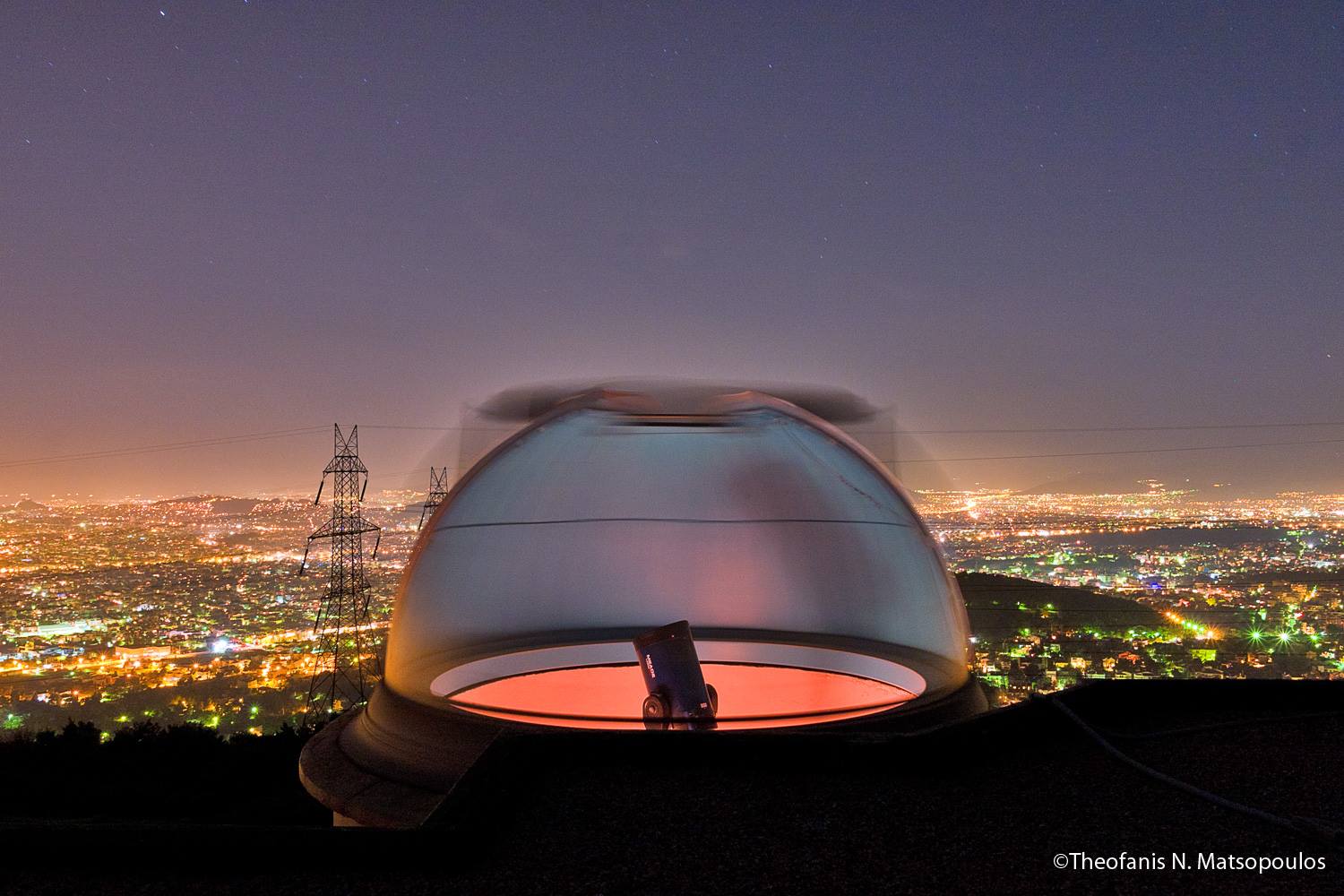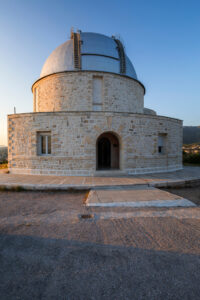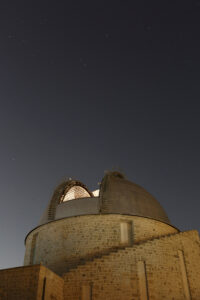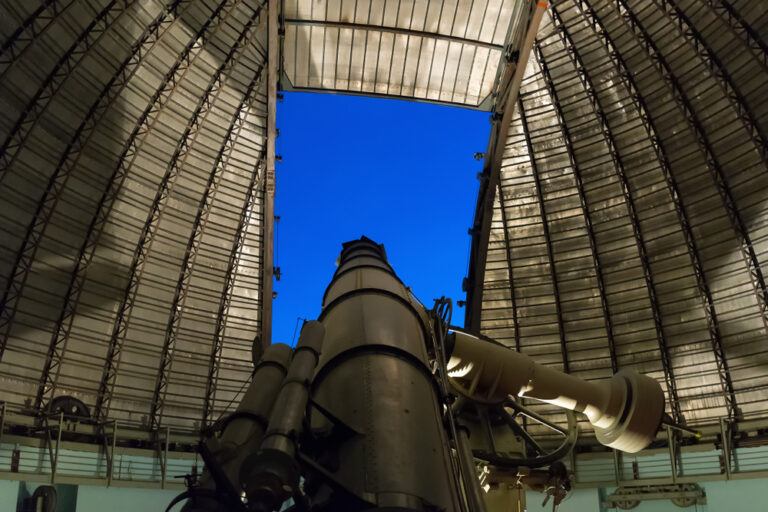How many times have you looked to the sky and wondered what it must be like up there, pondered over the locations of the planets and stars? The National Observatory of Athens offers you the opportunity to see, from close up, thousands of stars as well as the impressive planets Jupiter and Saturn.
You don’t need to go far to enjoy memorable experiences. Athens, a safe, appealing and multifaceted place, promises many unforgettable experiences, the National Observatory of Athens being one of these.
An evening visit to the National Observatory of Athens has all the attributes for a memorable night. Situated amid a wonderful lush setting, the observatory’s hilltop location arguably offers the best city view to be found in the wider Athens area, as well as an incredible sunset experience. And, of course, you are brought closer to space through the observatory’s Nighttime Gatherings initiative, an educational experience on the stars, planets and galaxies. Reserve places for yourself and friends or family and head up to the magical observatory crest. The facility recommends that children be at least 8 years old.
On Fridays and Saturdays at 19:30, the National Observatory of Athens, at the visitor centre’s lecture hall, offers a rundown of the facility’s history before continuing with an analysis on a series of matters, different for each session, concerning space and the universe. The analysis develops into an interactive discussion enabling exchange with attendants. High-tech projections supplement the sessions. The topics of discussion typically address the relationship between Earth and the Moon, delve into the nature of stars, analysing what they are, how they differ from other planets, examining their sizes and colours – yes, they come in a variety of marvellous colours, despite what we see from afar. The lifespans of stars are discussed. So, too, is their importance for the existence of life in the universe. Presenters also offer insight into what the universe and galaxies are, and how many galaxies exist in the universe under observation.
The observatory’s key speakers, Dr. Lazaros Koutoulidis and Dr. Vaggelis Kolokotronis, are extremely open to discussion, encouraging attendants to participate and ask any questions they have on the topics addressed.
Once the discussion has ended, visitors are taken to the top floor, to the dome with the telescope, for its presentation. The facility’s historic telescope, a NEWALL made in 1869, found its place at the National Observatory of Athens in 1958, introducing new standards to Greek astronomy. The telescope is 9 metres long and weighs a total of 16 tonnes. The observatory dome has a 14-metre diameter and was built using renowned Pentelic marble. The floor’s height is adjustable, descending or ascending, depending on where the telescope is to be aimed.
The session then continues with a digital observation of the night sky, astronomical observation made through a robotic telescope situated at the observatory’s small dome. The images its captures are digitally projected onto a big screen at the lecture hall. Depending on the season and, weather permitting, you may marvel at Jupiter, impressive Saturn, as well as some of their satellites, the Moon in its various phases, when appropriately positioned in the sky, and enjoy a clear view of large craters and seas, as well as the stars surrounding the Sun, whose different colours may be observed, plus planetary nebulae in more distant galaxies. The observation does not end there. You will also see clusters of hundreds of thousands of stars at the edge of the galaxy, stars that have gone out, as well as double stars, or two stars that appear close to each other.
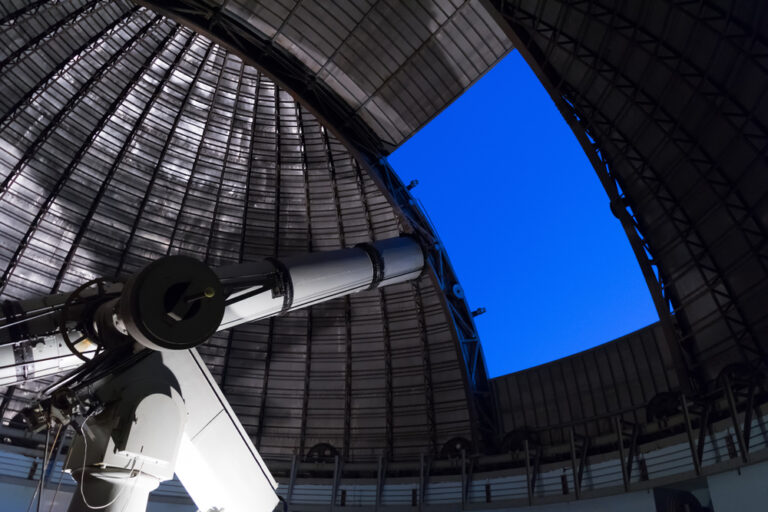
With the aid of a green laser, your speaker will guide you around the Athenian sky, its constellations, as well as the planets and stars observed in the sky at the time. If, however, the weather is not appropriate and the clouds are blocking the sky view, the observatory, as an alternative, projects an educational 30-minute film of astronomical interest, on the universe, Sun, the NEWALL telescope, as well as other related matters. At the end of its screening, speakers take questions from all viewers, young to old.
Visitors should be at the observatory by 19:30. The programme begins at 20:00. Arriving a little earlier will enable you to enjoy a unique view of the wider Athens area.
Information and reservations: tel. +30 210-3490022 or 210-8109107, weekdays 09.00-14.00, www.astro.noa.gr



